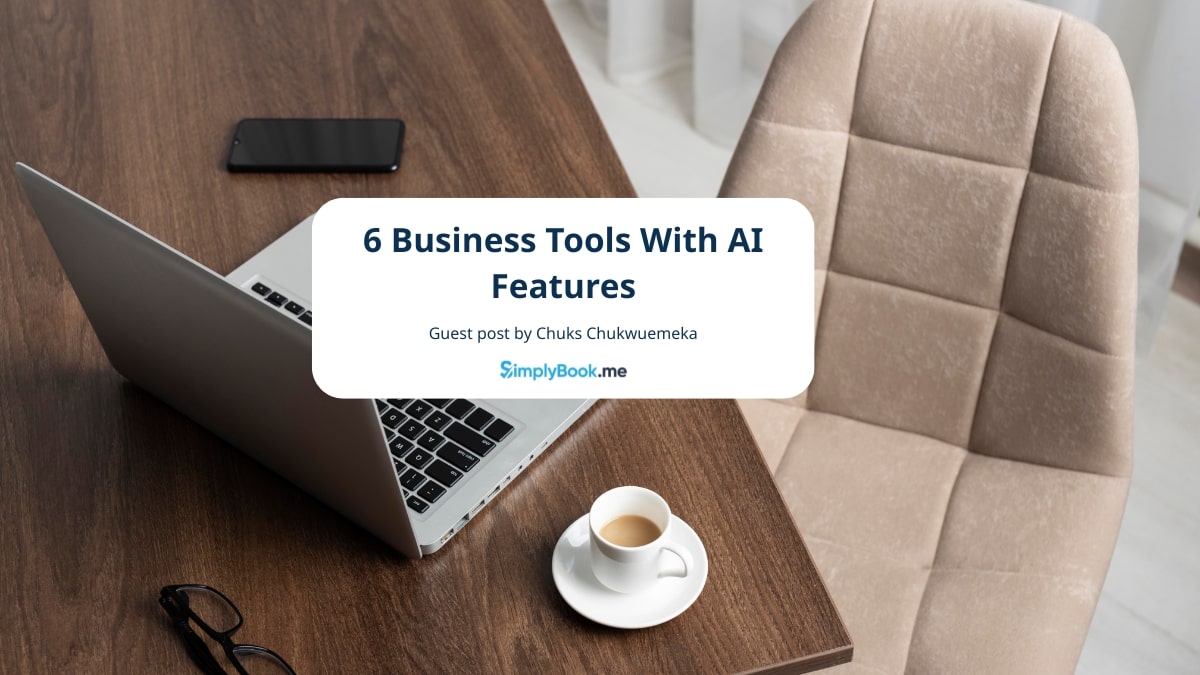5 Tried and Tested Approaches for Spotting and Fixing Gaps in your Content Strategy

This post is also available in:
![]()
![]()
![]()
![]()
Your business might have the most talented team of writers and social media specialists in the world. But that won’t mean much if their output doesn’t match your target audience’s wants, needs, and expectations. So, it’s essential that you’re constantly on the lookout to identify and fix gaps emerging in your content strategy.
Although no business sets out to create content that fails to resonate with its intended audience, gaps can emerge for several reasons. Some of those reasons include changing market sentiment, new trends, or a lack of sufficient analysis.
Whilst it’s easy for gaps to appear in your content strategy, they can be challenging to spot, and it’s even trickier to close them. With this in mind, let’s explore how content gap analysis can be an effective tool in resonating with your leads and how to go about fixing those pesky holes in your strategy:
What is Content Strategy Gap Analysis?
Content gap analysis revolves around analyzing your website and its content, as well as that of your competitors. This allows you to spot gaps or discover fresh marketing opportunities. This form of analysis relies upon analyzing the topics that competitors cover and the search keywords that they rank for.
As the illustration above shows, content gap analysis is vital in ensuring you reach all prospective customers you’re looking to optimize your site for.
The process can pave the way for greater SEO performance by indicating which new keywords are the best to target. It can also refine your overall content strategy by shining a light on topics yet to be covered.
The World Wide Web is becoming busy as more businesses undergo digital transformation and enhance their online presence. Gap analysis can help you to outrank competitors for particular keywords or aid you in understanding why your website traffic is dwindling.
Content gap analysis can also offer actionable insights into the type of content you can create and where your closest rivals excel. But how can you spot these gaps in your current content offerings? And how is it possible to optimize your output? Let’s take a deeper look at five tried and tested approaches for spotting and fixing gaps in your content:
1. Map Out Your Customers’ Journey
As we’re looking into ways your business can identify and rectify gaps in its content strategy, we’ll assume that you’ve already conducted audience analysis to know your ideal customer’s profile. If you’re yet to conduct audience analysis, it’s essential that you do so before looking deeper into your content–this is because there’s little reason to build content if you don’t know who you’re creating it for.
Now that you know your audience and have been creating content for your website, you should be capable of mapping out the journey that your customers take from their arrival to the point where they convert.
In analyzing this path, look for any inconsistencies hindering their progress. Have you created enough content to generate awareness, such as social media posts, educational blog entries, eBooks, and email campaigns? What about content that showcases your products? Or information that can turn visitor intent into a purchase decision?
Guiding customers on purchase journeys requires the effective use of social media, reviews, guides, case studies, pricing information, and product demonstrations where applicable–and their position within your pages can make a significant difference between leveraging a purchase or your lead losing interest and navigating away.
Your website should feature content that caters to customers at each stage of the funnel, from initial engagement to advocacy.
In order to effectively map out the buyer’s journey for your website, it’s essential to identify every step that a visitor would take to get from engagement all the way through to advocacy. To make your approach as effective as possible, it’s worth looking at key questions that a buyer would be asking at each stage and creating content to answer those questions accordingly.
Remember to ask yourself about the information they’ll need to move to the next step of their journey and then seek to supply it.
2. Always Analyze your Competitors
Effective content strategy gap analysis requires you to get as close as possible to your competitors.
To conduct a practical competitor analysis, it’s worth identifying between three and five key competitors based on stature and their relevance to your niche and scanning their content to discover the topics that they’re working to cover.
By creating a list of their different content categories, you can see the audiences that they’re reaching without you. Fortunately, most website blogs break posts down into categories or tags, making the process of identifying the topics they cover easier.
When scanning your competitor’s content, ask yourself questions like:
- How detailed is their content?
- How much content is being produced for each category?
- Have they developed a structure to follow?
- Are their SEO approaches effective enough?
- Is their content easy to read?
This level of analysis can help you to identify topics that either aren’t being covered enough by your website or those that you could benefit from working on to outrank your rivals.
Plenty of tools are available to help you master SEO competitor analysis, and platforms like SEMrush, Moz, or Ahrefs can help provide keyword analysis of your closest rivals. This can help you see what they rank highly for and what they struggle to cover.
The results of your keyword analysis can provide you with insights into what opportunities you’re not taking advantage of enough.
Through competitor keyword analysis, you can discover the following:
- How your keywording matches up to your competitors
- How your competitors are ranking
- What long-tail keywords can you benefit from using
- Which keywords are too low-value to continue using
Through these competitor insights, you can gain the inside track on how to optimize your SEO to rank for the keywords that your rivals are unable to tap into.
3. Audit your Existing Content
It’s not enough to look to your competitors for indicators to fill your content gap–it’s also vital to thoroughly assess your own content.
With this in mind, it’s essential to ensure that the SEO that you use on your website is thoroughly user-friendly and well-thought-out.
Conduct an audit of your website’s content and look at easy-to-improve SEO elements like your meta descriptions, title tags, and headers–which can all be optimized to both welcome users and clearly communicate your site’s framework for Google’s crawlers.
Your audit should also look at whether your high-traffic content has the right call-to-action in place and that your internal linking is up to scratch without any dead ends lurking.
Think of your internal content gap audit like it’s a piece of essential SEO housekeeping that seeks out any weak pages in terms of explanations, ambiguous content, or redundant topics.
It’s also worth keeping in mind your largest contentful paint (LCP), which refers to your website’s full loading time–taking into account the time it takes to render your most prominent on-site elements. Too long a loading time can create gaps in your content strategy as leads abandon your site rather than wait longer than necessary.
4. Identify Relevant Search Trends
Identifying emerging trends that you can create content to rank for is also vital. As you gain more substantial insights on trending topics for your target audience, it’s worth analyzing your specialized content’s performance in organic search results.
Whilst there are excellent tools like Path Analyzer to help on this front, it’s possible to manually identify trends surrounding your industry by exploring social media and the frequency in which specific talking points, customer concerns, and processes arise.
The beauty of creating content for emerging trends is that you’re likely to outpace competitors for original content, and trending topics are far easier to rank for by virtue of being a key talking point.
Take note of recurring themes that your target audience is discussing and work to develop content–or optimize existing content–to cater to those curious to explore the topic further.
5. Turn to the Right Tools to Help
There are many ways of conducting manual gap analysis, but it’s worth noting that plenty of tools available can help you maximize your chances of success. Keyword research and SEO tools are plentiful and can help you to understand which topics your target audience is searching for online.
Discovering topics with a high search volume and few results can identify an industry-wide content gap. By filling this gap, you can gain quick results.
Other platforms, like social listening or online reputation management (ORM) tools, can work with social media platforms. These provide insights into what your audience is talking about and how they perceive your brand. This can help to pave the way for your business to fill knowledge gaps among your prospective leads.
Tools like Hootsuite, BrandWatch, and Mention are all strong examples of these platforms. However, there’s a wide market to tap into–so research can be your ally in finding the right social tool to suit your needs.
Furthermore, tools like CopyPress can enable you to gain access to a variety of gap analysis insights to share your campaigns. Meanwhile, Thematical can automatically analyze industry content, your competitors, and any prospective gaps to fill automatically.
Final Thoughts
Gap analysis is an often neglected but essential component of successful SEO. However, your business is likely to reap the benefits from taking the time to audit your business and your competitors’ outputs accordingly.
Although it can be difficult to wield an axe over your underperforming content, your website will reap the benefits of a more focused SEO approach. Brining in fresh custom through strategically covered emerging topics and high-value keywords.
Guest Author Bio:

Dmytro Spilka is the CEO of Solvid, a creative content creation agency based in London. His work has been published in Shopify, WordStream, Entrepreneur, BuzzSumo, Campaign Monitor and Tech Radar.



Comments
0 commentsNo comments yet